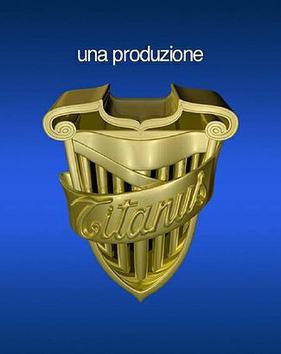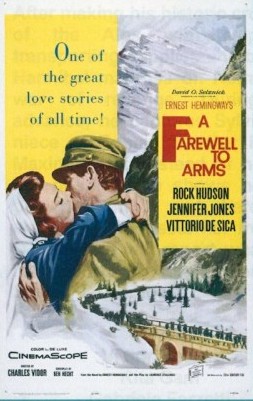
Sofia Costanza Brigida Villani Scicolone, known professionally as Sophia Loren, is an Italian actress, active in her native country and the United States. With a career spanning over 70 years, she is one of the last surviving stars from the Golden Age of Hollywood cinema.

Wild is the Wind is a 1957 American drama film directed by George Cukor and starring Anna Magnani, Anthony Quinn, and Anthony Franciosa. It tells the story of an American rancher who, after his wife dies, goes to Italy to marry her sister, but finds that she falls in love with his young ranch hand.

Marcello Vincenzo Domenico Mastroianni was an Italian film actor and one of the country's most iconic male performers of the 20th century. He played leading roles for many of Italy's top directors in a career spanning 147 films between 1939 and 1996, and garnered many international honours including two BAFTA Awards, two Best Actor awards at the Venice and Cannes film festivals, two Golden Globes, and three Academy Award nominations.

Sword-and-sandal, also known as peplum, is a subgenre of largely Italian-made historical, mythological, or biblical epics mostly set in the Greco-Roman antiquity or the Middle Ages. These films attempted to emulate the big-budget Hollywood historical epics of the time, such as Samson and Delilah (1949), Quo Vadis (1951), The Robe (1953), The Ten Commandments (1956), Ben-Hur (1959), Spartacus (1960), and Cleopatra (1963). These films dominated the Italian film industry from 1958 to 1965, eventually being replaced in 1965 by spaghetti Western and Eurospy films.

Domenico Modugno was an Italian singer, actor and, later in life, a member of the Italian Parliament. He is known for his 1958 international hit song "Nel blu dipinto di blu", for which he received the first Grammy Awards for Record of the Year and Song of the Year. He is considered the first Italian cantautore.

John Saxon was an American actor who worked on more than 200 film and television projects during a span of 60 years. He was known for his work in Westerns and horror films, often playing police officers and detectives.
Polish Film School refers to an informal group of Polish film directors and screenplay writers active between 1956 and approximately 1963. Among the most prominent representatives of the school are Andrzej Wajda, Andrzej Munk and Jerzy Kawalerowicz.

Mario Bava was an Italian filmmaker who worked variously as a director, cinematographer, special effects artist and screenwriter. His low-budget genre films, known for their distinctive visual flair and stylish technical ingenuity, feature recurring themes and imagery concerning the conflict between illusion and reality, as well as the destructive capacity of human nature. Widely regarded as a pioneer of Italian genre cinema and one of the most influential auteurs of the horror film genre, he is popularly referred to as the "Master of Italian Horror" and the "Master of the Macabre".

Ben-Hur is a 1959 American religious epic film directed by William Wyler, produced by Sam Zimbalist, and starring Charlton Heston as the title character. A remake of the 1925 silent film with a similar title, it was adapted from Lew Wallace's 1880 novel Ben-Hur: A Tale of the Christ. The screenplay is credited to Karl Tunberg, but includes contributions from Maxwell Anderson, S. N. Behrman, Gore Vidal, and Christopher Fry. The cast also features Stephen Boyd, Jack Hawkins, Haya Harareet, Hugh Griffith, Martha Scott, Cathy O'Donnell and Sam Jaffe.

Titanus is an Italian film production and distribution company, founded in 1904 by Gustavo Lombardo (1885–1951). The company's headquarters are located at 28 Via Sommacampagna, Rome and its studios on the Via Tiburtina, 13 km from the centre of Rome. The logo is a gold shield.

Pietro Germi was an Italian film director, screenwriter, and actor, noted for his development of the neorealist and commedia all'italiana genres.
A list of some notable films produced in the Cinema of Italy ordered by year and decade of release For an alphabetical list of articles on Italian films see Category:Italian films.

Giorgio Guidi, known professionally as Johnny Dorelli, is an Italian actor, singer and television host.
Portrait of Gina, or Viva Italia is a 1958 documentary film by Orson Welles. It was funded by ABC TV. Around 30 minutes long, it follows a similar style to The Fountain of Youth (1958) and F for Fake (1973).

Commedia all'italiana, or Italian-style comedy, is an Italian film genre born in Italy in the 1950s and developed in the 1960s and 1970s. It is widely considered to have started with Mario Monicelli's Big Deal on Madonna Street in 1958, and derives its name from the title of Pietro Germi's Divorce Italian Style (1961). According to most of the critics, La Terrazza (1980) by Ettore Scola is the last work considered part of the commedia all'italiana.

Pasquale Festa Campanile was an Italian screenwriter, film director and novelist, best known as a prominent exponent of the commedia all'italiana genre.
City of Gold is a 1957 Canadian documentary film by Colin Low and Wolf Koenig, chronicling Dawson City during the Klondike Gold Rush. It made innovative use of archival photos and camera movements to animate still images, while also combining narration and music to bring drama to the whole. Its innovative use of still photography in this manner has been cited by Ken Burns as the source of inspiration for his so-called Ken Burns effect, a type of panning and zooming effect used in video production to animate still images.

A Farewell to Arms is a 1957 American epic war drama film directed by Charles Vidor. The screenplay by Ben Hecht, based in part on a 1930 play by Laurence Stallings, was the second feature-film adaptation of Ernest Hemingway's 1929 semiautobiographical novel of the same name. It was the last film produced by David O. Selznick.

Hollywood on the Tiber is a phrase used to describe the period in the 1950s and 1960s when the Italian capital of Rome emerged as a major location for international filmmaking attracting many foreign productions to the Cinecittà studios. By contrast to the native Italian film industry, these movies were made in English for global release. Although the market for many of these films was primarily American, they enjoyed widespread popularity in other countries, including Italy.
















